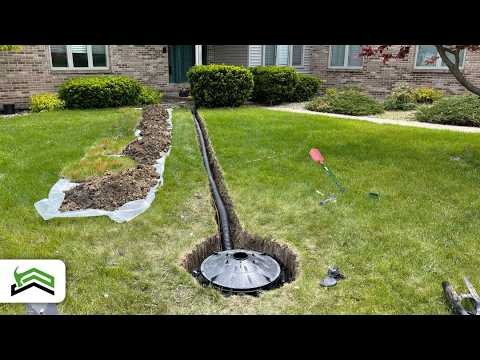Dealing with a flat yard can pose significant challenges when it comes to drainage. Without a natural slope, water tends to pool and sit, leading to soggy grass, muddy gardens, and potentially damaging the foundation of your home. However, with a well-planned DIY project, you can improve drainage in your yard by implementing effective solutions that will keep your outdoor space healthy and dry.
**Understanding Your Yard’s Needs**
Before diving into the project, it’s crucial to understand where and how water accumulates in your yard. Observe your yard during a rainstorm and note areas where water stands for more than 30 minutes after the rain has stopped. These observations will guide you in deciding which drainage solution is most suitable for your landscape.
**Common DIY Drainage Solutions for Flat Yards**
1. **French Drains**: A French drain is one of the most popular drainage solutions for yards lacking natural slopes. It involves digging a trench filled with gravel and a perforated pipe which carries water away from the problematic area. The trench should be directed towards an area that can handle additional water or towards a street drain.
– **Installation Steps**:
– Mark out the path for the trench using stakes and string ensuring it runs from the highest point of pooling water to an appropriate exit point.
– Dig the trench approximately 6 inches wide and up to 24 inches deep.
– Lay down a layer of landscape fabric to prevent soil from clogging the gravel.
– Place a perforated pipe at the bottom of the trench.
– Cover the pipe with gravel then wrap over with landscape fabric to keep it neat.
– Fill in with topsoil or finish with gravel at surface level.
2. **Dry Wells**: If redirecting water to public drainage isn’t an option, constructing a dry well is another viable solution. A dry well is essentially a large hole filled with rocks or gravel that collects excess water and slowly releases it into the surrounding soil.
– **Installation Steps**:
– Choose an appropriate location that’s downhill from where you have standing water but still within your property boundaries.
– Dig a hole that can hold significant amounts of runoff (typically around 4 feet deep and wide).
– Line the hole with landscape fabric followed by filling it with gravel or large stones.
– Integrate this system with gutters or French drains for maximum efficiency.
3. **Swales**: Swales are shallow ditches that follow along contour lines across your land. They gather runoff water allowing it to naturally percolate into soil as it travels across these channels.
– **Installation Steps**:
– Determine contour lines using stakes tied with strings at level heights across stakes or employing laser levels.
– Dig swales about 2 feet deep and several feet wide following these contours ensuring gradual slopes on sides for stability.
– Plant grass or deep-rooted plants along swales to prevent erosion while capturing additional moisture.
4. **Rain Gardens**: A rain garden is an attractive landscaping feature designed as shallow depressions which collect stormwater runoff from roofs driveways or other impervious surfaces redirecting them away from structures while allowing them time to soak into ground naturally recharging groundwater supply.
– **Installation Steps**:
– Select native plants suited for wet conditions such as rushes sedges ferns wildflowers etc
– Implement about 4-8 inches below normal grade fill base with sandy soil compost mix
– Arrange plants according density moisture needs ensuring middle zone holds most water tolerant species
**Conclusion**
Implementing proper drainage solutions in yards without natural slopes not only prevents potential damage but also enhances overall health beauty landscapes By considering one more above mentioned methods based on specific characteristics problem areas homeowners can effectively manage standing water issues Moreover engaging such projects allows further customization adding functional aesthetic value property

Leave a Reply